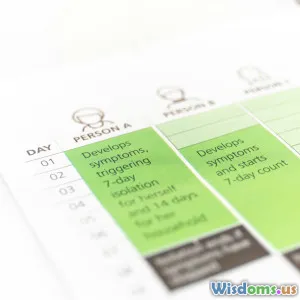
The Truth About Writer’s Block and How to Beat It Forever
7 min read Discover the real causes of writer’s block and proven strategies to overcome it for good. (0 Reviews)
The Truth About Writer’s Block and How to Beat It Forever
Writer’s block is often painted as an insurmountable barrier, a mysterious force that strikes creativity dead in its tracks. Yet the truth is far less mystical—and far more reachable. Contrary to popular belief, writer’s block is not just an inevitable curse of the craft but a set of recognizable challenges that, once understood, can be dismantled.
In this article, we’ll explore what writer’s block truly is, the psychological and environmental factors behind it, and share actionable, science-backed strategies to beat it—and keep it at bay, forever.
What Exactly Is Writer’s Block?
Writer’s block isn’t just the inability to put words on the page; it’s a complex mixture of fear, stress, perfectionism, and sometimes, misinformation about what creativity should look like.
Common Misconceptions:
- Writer’s block is just laziness: Many think it reflects a lack of discipline, but often it’s a sign of deeper creative or emotional struggles.
- You have to wait for inspiration: Waiting passively for the 'perfect mood' often worsens the block.
- Writing only happens when you feel motivated: Creativity can be nurtured through discipline and routine, not just spontaneous bursts.
Psychological Roots
- Fear of failure: Psychologist Natalie Goldberg argues that anxiety triggers self-censorship, which blocks creative freedom.
- Perfectionism: The drive to write something ‘perfect’ right away can paralyze.
- Decision fatigue: Having too many choices or uncertainty about direction can stall progress.
Real-Life Examples
Consider J.K. Rowling, who famously faced long periods of doubt before finishing the Harry Potter series. Similarly, acclaimed authors like Stephen King and Maya Angelou have publicly shared their battles with writer’s block, proving that even the most successful face creative obstacles.
Why Writer’s Block Happens: Scientific Insights
Recent neuroscience reveals that writer’s block involves the brain’s executive function and default mode network conflict. When self-critical thoughts activate excessively, they suppress the creative flow.
Stress and Cortisol
Elevated stress levels release cortisol, which can inhibit memory and ideation. Chronic stress during writing deadlines or personal issues can crater productivity.
Lack of Structure
Without clear goals or schedules, creative processes become disorganized. Studies show structured routines increase output—even in highly creative fields.
How to Beat Writer’s Block Forever: Proven Strategies
1. Change Your Environment
Physical surroundings significantly impact creativity. Try working in different locations—coffee shops, parks, or even just another room—to refresh your perspective.
2. Establish a Writing Routine
Set designated times for writing, no matter how short. Consistency builds mental pathways that promote focus and reduce the intimidation factor of ‘starting.’
3. Freewriting and Brain Dumping
Allow yourself to write without judgement for 10 minutes daily. This reduces pressure and lets ideas flow—dead ends included—without fear.
4. Practice Mindfulness and Manage Stress
Mindfulness meditation lowers cortisol and increases attention. Even five minutes daily can quiet the inner critic and foster a receptive mind.
5. Set Small, Achievable Goals
Breaking writing tasks into small, clear goals turns an overwhelming project into manageable steps, making progress visible.
6. Seek Feedback Early and Often
Feedback can alleviate uncertainty and provide new directions. Constructive critique is a critical tool.
7. Accept Imperfection
Remember that first drafts aren’t final. Renowned author Anne Lamott calls her first drafts "shitty first drafts," encouraging writers to embrace imperfection as part of the process.
8. Limit Distractions and Digital Temptations
Use apps like Freedom or StayFocusd to block distracting websites. A focused environment promotes flow.
9. Read Widely and Often
Exposure to a diverse range of styles and ideas fuels creativity and replenishes your writer’s toolkit.
10. Physical Exercise
Regular aerobic activity stimulates brain function and creativity by increasing blood flow.
Tools and Technologies That Help
Modern writers benefit from apps like Scrivener for organization, Grammarly for drafting clarity, and Pomodoro timers to maintain disciplined sessions. Combining traditional practices with new tools creates a robust system to maintain momentum.
Conclusion: Making Peace with the Process
Writer’s block is not an enemy to fear but a signal to reassess and adjust. By understanding its roots and implementing realistic, proven strategies, you can transform writer’s block from a crippling barrier into an invitation for growth and innovation.
Creativity is a muscle; the more you use it with care and persistence, the stronger it becomes. Embrace imperfection, structure, and self-compassion—and writing will flow freer than ever before.
So start today, right now, with one small step—and beat writer’s block, forever.
References:
- Goldberg, Natalie. Writing Down the Bones.
- Lamott, Anne. Bird by Bird
- Kounios, J., & Beeman, M. (2009). The Aha! Moment: The Cognitive Neuroscience of Insight.
- Research on cortisol and creativity – Psychoneuroendocrinology, University Studies.
Rate the Post
User Reviews
Popular Posts





















